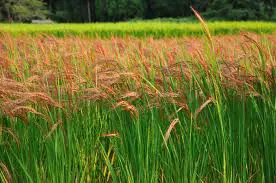Millions of people are waking up to the realities of what’s really in their food, and how it’s really being produced, but many of them still aren’t aware of one of the most mysterious and unhealthy “scientific” production techniques: mutagenesis.
While most of the focus has been on transgenic plants, and rightfully so, many activists and grassroots organizations have begun sounding the alarm about the modern mutagenesis process, which could well be just as damaging to our health.
Here’s how mutagenesis is done:
“Mutagenesis is a method of plant breeding that involves subjecting plants to radiation, or dousing them in chemicals, in a way that scrambles their genes in order to produce new traits,” according to this article from the Organic Consumers Association, which continues, “the goal is to produce plants suitable for modern industrial agriculture, where crops are grown in vast monocultures with the aid of chemicals and machinery.”
The technique originally began in the 1950s as a random process that transformed into a direct mutagenesis process that targets specific genes.
It sounds a lot like genetic engineering, doesn’t it?
“Like genetic engineering, mutagenesis can cause dramatic shifts in genetically determined traits, producing unknown toxins or allergens,” the OCA says.
It sounds almost too wrong to be true, but mutagenesis is very real, and it’s being done to some of our favorite food crops without so much as a peep from the mainstream media. Mutagenesis is also unregulated, according to the OCA.
Consumers, once again, are being kept in the dark, and avoiding foods created in this manner actually may be even more difficult than avoiding GMOs.
The Seven Main Mutated Crops (But How to Avoid Them)?
According to the OCA, there are seven main mutated crops to avoid (it should be noted that foods grown using these methods may actually even be found in the organic section, although a campaign has been launched against this practice).
Here are the top 7 crops that may be grown using mutagenesis:
1. Rice- This staple food crop is relatively cheap and plentiful for the time being, but most people are not aware that it may be subjected to mutagenesis.
2. Pears- In addition to the potential use of mutagenesis, the pear’s soft skin means they’re usually high in pesticide residues that cannot be washed off. Make sure to buy these from a trustworthy organic farm.
3. Cotton- Already a heavily genetically engineered crop, cotton may also be produced using mutagenesis. Any food with cottonseed oil should be avoided for these and other reasons.
4. Barley- Barley is often substituted for other less healthy grains, but many people are not aware of the potential use of mutagenesis in this case.
5. Grapefruit- Great for cleansing first thing in the morning, grapefruit may also be grown using the controversial technique according to the OCA article.
6. Sunflowers- Used in organic foods as an alternative to heavily GMO crops like canola and soy, sunflowers may still be unhealthy if grown using this technique so tread lightly and feel free to write your favorite organic company to see if they use sunflowers produced with mutagenesis.
7. Wheat- Perhaps the most infamous of the crops on here in terms of how much this crop has changed over time, wheat is one of the most heavily mutagenesis-produced crops on the market. The negative effects felt in our health (and our waistlines) by this type of “modernized” wheat is detailed in the best-selling book ‘Wheat Belly’ by Dr. William Davis.
A type of herbicide resistant “Clearfield Wheat” is grown on over a million acres in the U.S. according to the OCA.
In response to confusion about the use of mutagenesis, pro-organic companies such as High Mowing Organic Seeds for example are pledging not to use seeds treated in this way.
According to Food Safety News, the process of mutagenesis could technically be considered genetic engineering; the transgenic (aka GMO) type is banned in organic, but cisgenic GE used in the cell fusion (aka mutagensis) process is still allowed, for now anyway.
And big agrochemical companies like BASF, Dow, and Sygenta are finding it easier to bring crops using these seeds to market than GMOs because of the lack of regulation, according to a report from Bloomberg Businessweek.
For now mutagenesis may be hard to avoid since there is so little tracking and transparency in the process, but knowing your farmer and buying from smaller organic companies may help.
The OCA believes the process should not be allowed in organic food, hence their previously mentioned campaign.
“Like genetic engineering, mutagenesis can cause dramatic shifts in genetically determined traits, producing unknown toxins or allergens. ‘Wheat Belly’ author Dr. William Davis blames mutagenesis, which is used to produce modern wheat — including organically grown wheat — for increases in wheat allergies and intolerances,” the organization said.
RELATED READING: Organic Farmers Must Do These 11 Things to Prevent Being Contaminated by GMOs (And Sued)
Thanks for installing the Bottom of every post plugin by Corey Salzano. Contact me if you need custom WordPress plugins or website design.





